Aircraft Japanese-made Self-Defense Forces. Part 1
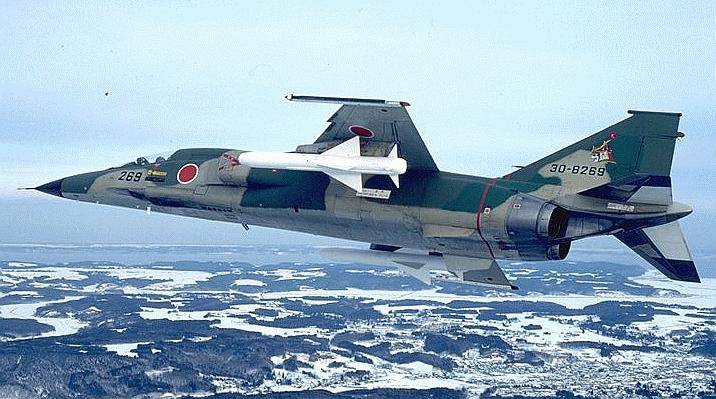
After the defeat of imperial Japan in World War II, the country under American occupation was forbidden to have its own armed forces. In the Constitution of Japan adopted in 1947, the refusal to establish the armed forces and the right to wage war was proclaimed. However, in 1952, the National Security Forces were formed, and in 1954, the Japan Self-Defense Forces began to form on their basis.
Formally, this organization is not the armed forces and in Japan itself is considered a civilian office. Self-Defense Forces are commanded by the Prime Minister of Japan. Nevertheless, this “non-military organization” with a budget of $ 59 billion and a population of almost 250000 is equipped with a fairly modern weapons and technology.
Simultaneously with the creation of the Self-Defense Forces, the reconstruction of the Air Force began - the Japan Air Self-Defense Force. In March 1954, Japan concluded a military assistance treaty with the United States, and in January 1960, a "treaty of mutual cooperation and security guarantees" was signed between Japan and the United States. In accordance with these agreements, the Air Self-Defense Force began to receive American-made aircraft. The first Japanese air wing was organized on 1 October 1956 with 68 T-33As and 20 F-86Fs.
In 1957, the licensed production of F-86F Saber American fighter jets began. Mitsubishi built 1956 F-1961F from 300 to 86 for the year. These aircraft served as part of the Self-Defense Air Force to 1982 year.
After adopting and launching the licensed production of F-86F aircraft, the Self-Defense Air Force required two-seat jet training aircraft (TCB), which in their characteristics are close to combat fighters. Produced by the Kawasaki corporation under the license of the T-33 jet fighter with a straight wing (built by 210 aircraft), created on the basis of the first American fighter jet F-80 fighter “Shuting Star”, did not fully meet the requirements.
In this regard, Fuji company based on the American fighter F-86F Saber has developed the TC T-1. Two crew members were housed in a cockpit in a tandem under a common, folded back lantern. The first plane took off in the 1958 year. Because of the problems with fine-tuning the engine of the Japanese design, the first British version of the T-1 was equipped with imported British engines Bristol Aero Engines Orpheus, 17,79 kN.
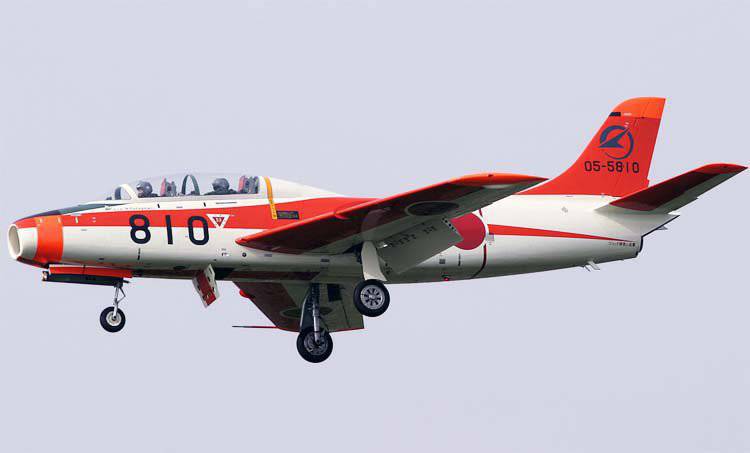
The aircraft was recognized as meeting the requirements of the Air Force, after which two batches of 22 aircraft were ordered under the designation T-1A. The aircraft of both batches delivered to the customer in 1961 -1962 year. From September 1962 to June 1963, the 20 serial aircraft were built under the designation T-1B with the Japanese engine Ishikawajima-Harima J3-IHI-3 11,77 kN. Thus, the TC-T-1 became the first post-war Japanese jet aircraft designed by its own designers, which was built at national enterprises from Japanese components.
The Japanese Self-Defense Air Force has operated the T-1 TCF for over 40 years, several generations of Japanese pilots were trained on this training aircraft, the last aircraft of this type was decommissioned in the 2006 year.
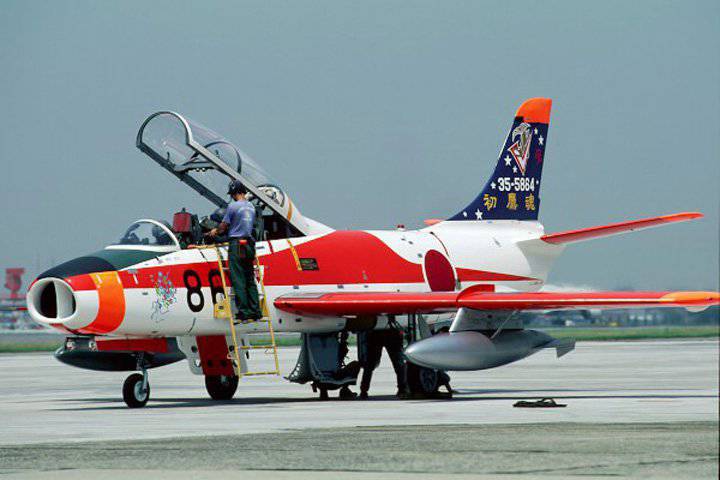
With a take-off weight of up to 5 t, the plane reached a speed of up to 930 km / h. Armed with one machine gun caliber 12,7 mm, could bear the combat load in the form of NAR or bombs weighing up to 700 kg. In terms of its main characteristics, the Japanese T-1 roughly corresponded to the widespread Soviet TCB - UTI MiG-15.
In 1959, the Japanese company Kawasaki acquired a license for the production of a marine anti-submarine - Lockheed patrol aircraft P-2H "Neptune". With 1959, the factory in Gifu began mass production, ending with the release of 48 aircraft. In 1961, Kawasaki began the development of Neptune’s own modification. The aircraft received the designation P-2J. On it, instead of the piston, installed two turboprop engines "General Electric" T64-IHI-10 with the power of 2850 hp, produced in Japan. The auxiliary turbofan engines of the Westinghouse J34 were replaced with the Ishikawajima-Harima IHI-J3 turbofan engines.
In addition to the installation of turboprop engines, there were other changes: the fuel stock was increased, a new anti-submarine and navigation equipment was installed. In order to reduce drag, the engine nacelles were redesigned. To improve the take-off and landing characteristics on weak terrain, the chassis was altered - instead of one large-diameter wheel, the main pillars had twin wheels of smaller diameter.
In August 1969, the serial production of the P-2J began. Between 1969 and 1982, 82 cars were produced. This type of patrol aircraft was operated in the Japanese maritime aviation until 1996 year.
Realizing that the American F-86 subsonic jet fighters were no longer up-to-date by the beginning of the 60-s, the Self-Defense Forces command began to look for a replacement for them. In those years, the concept of air combat in the future would be reduced to supersonic interception of strike aircraft and rocket duels between fighters.
The supersonic Lockfid F-50 Starfighter, developed in the USA at the end of the 104's, fully corresponded to these ideas.
During the development of this aircraft high speed characteristics were put at the forefront. “Starfighter” was often called the “rocket with a man inside”. The US Air Force pilots quickly became disillusioned with this capricious and emergency plane, and they began to offer it to the allies.
“Starfighter” at the end of 1950-ies, despite the high accident rate, became one of the main fighters of the Air Force of many countries, was produced in various versions, including in Japan. It was an all-weather interceptor F-104J. March 8 The first Starfighter of the Japanese assembly was rolled out of the gate of the Mitsubishi plant in the city of Komaki. By construction, it was almost no different from the German F-1962G, and the letter "J" means only the country of the customer (J - Japan).
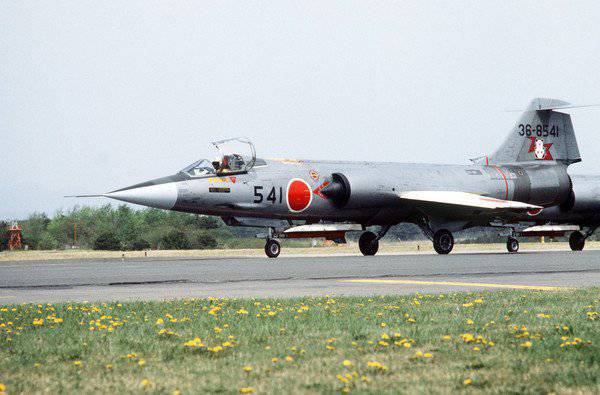
Since 1961, the Air Force of Japan has received 210 Starfighter type aircraft, of which 178 of them were produced by the Japanese concern Mitsubishi under license.
In 1962, construction began on the first Japanese turboprop airliner for small and medium-haul lines. The aircraft was produced by a consortium of Nihon Aircraft Manufacturing Corporation. It includes almost all Japanese aircraft manufacturers, such as: Mitsubishi, Kawasaki, Fuji and Shin Meyva.
The passenger turboprop aircraft, designated YS-11, was intended to replace the Douglas DC-3 on domestic airlines and could carry up to 60 passengers with a cruising speed of 454 km / h. From 1962 to 1974, the aircraft 182 was released. To date, the YS-11 remains the only commercially successful passenger aircraft produced by a Japanese company. From 182 82 aircraft produced aircraft were sold to 15 countries. A dozen of these aircraft were delivered to the military department, where they were used as transport and training aircraft. Four aircraft were used in the EW version. In 2014, it was decided to write off all YS-11 variants.
By the middle of the 1960-s, the F-104J began to be regarded as an outdated machine. Therefore, in January 1969, the Japanese cabinet raised the issue of equipping the country's air force with new fighter-interceptors, which were to be replaced by Starfighters. As a prototype, a third-generation American multi-role fighter F-4E "Phantom" was chosen. But the Japanese, ordering an option F-4EJ, set the condition that it was a "clean" fighter-interceptor. The Americans did not object, and with F-4EJ all the equipment was removed to work on ground targets, but the air-to-air weapons were reinforced. All this was done in accordance with the Japanese concept of "only in the interests of defense."
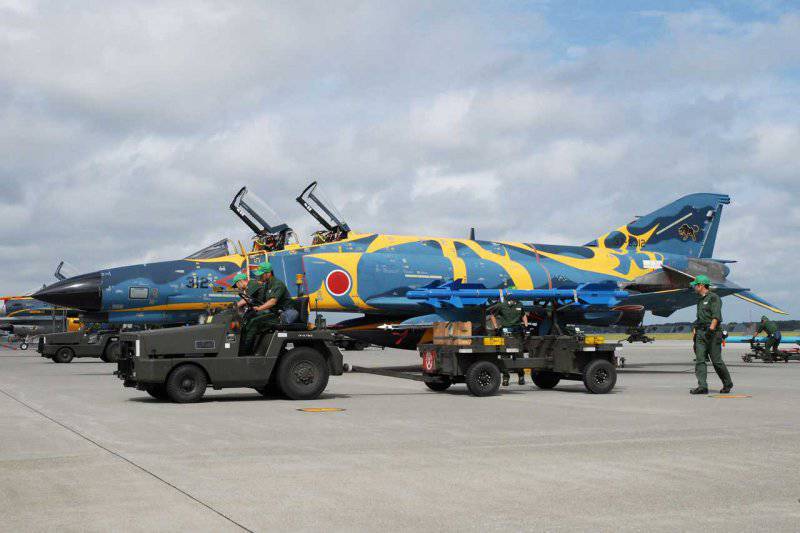
The first licensed aircraft of the Japanese assembly first flew 12 in May 1972 of the year. Subsequently, Mitsubishi, under license, built the 127 F-4FJ.
The "softening" of Tokyo's approaches to offensive weapons, including those in the Air Force, began to be observed in the second half of the 1970s under pressure from Washington, especially after the adoption of the so-called "Guidelines for Japanese-US Defense Cooperation" in 1978. Prior to this, no joint actions, even exercises, self-defense forces and the American parts in Japan were conducted. Since that time, much, including in the performance characteristics of aviation technology, has changed in the Japanese Self-Defense Forces based on joint offensive operations.
For still-produced F-4EJ fighters, for example, began to install equipment for in-flight refueling. The last Phantom for the Japanese Air Force was built in 1981. But already in 1984, a program to extend their lifespan was adopted. In this case, "Phantoms" began to be equipped with means of bombing. These aircraft were called Kai. Most of the "Phantoms" who had a large residual resource were upgraded.
F-4EJ Kai fighters continue to be in service with the Japan Self-Defense Air Force. Recently, about 10 aircraft of this type have been written off annually. In the ranks, the F-50EJ Kai fighters and RF-4EJ reconnaissance aircraft are still around 4. Apparently, the machines of this type will be completely written off after receiving American F-35A fighter jets.
At the beginning of 60's, the Japanese firm Kawanishi (Kawanishi) renamed Shin Meyva (Shin Maywa), known for its seaplanes, began research on the development of a new generation anti-submarine plane. In 1966, the design was completed, and in 1967, the first prototype took to the air.
The new Japanese flying boat, which received the designation PS-1, was a cantilever, high-winged, with a straight wing and a T-tail. The design of the seaplane is all-metal single-mounted, with a semi-monocoque airtight fuselage. The power plant consists of four T64 turboprop engines with HP 3060 power. , each of which is driven by a three-bladed propeller. Under the wing for additional stability during takeoff and landing there are floats. To move on the slip serves retractable wheeled chassis.
To solve antisubmarine tasks, the PS-1 had a powerful search radar, a magnetometer, a receiver and an indicator of hydroacoustic buoy signals, a flight indicator over the buoy, as well as active and passive submarine detection systems. Under the wing, between the engine nacelles, there were nodes for the suspension of four anti-submarine torpedoes.
In January 1973, the first aircraft entered service. Following the prototype and two pre-production vehicles, a batch of 12 production vehicles followed, followed by eight more aircraft. During operation, six PS-1 were lost.
Subsequently, the Maritime Self-Defense Forces abandoned the use of PS-1 as an anti-submarine aircraft, and all the vehicles remaining in the ranks were focused on the task of search and rescue at sea, the anti-submarine equipment from the seaplanes was dismantled.
In 1976, a US-1A search and rescue version with more powerful T64-IHI-10J hp engines appeared. Orders for new US-3490A were received in 1-1992 years, in all, 1995 aircraft were ordered by 1997 year.
There are currently two US-1A search and rescue aircraft in Japanese naval aviation.
A further development option for this hydroplane was US-2. It differs from the US-1А by the cockpit glazing and the updated on-board equipment. New Rolls-Royce AE 2100 turboprop engines with 4500 kW power were installed on the aircraft. Wings were redesigned with integrated fuel tanks. Also, the search and rescue variant has a new Thales Ocean Master radar in the nose. A total of US-14 2 aircraft were built, five aircraft of this type are operated in naval aviation.
By the end of the 60s, the Japanese aviation industry had accumulated considerable experience in the licensed construction of foreign aircraft. By that time, the design and industrial potential of Japan made it possible to design and build independently aircraft equipment that were not inferior to world standards in terms of basic parameters.
In 1966, Kawasaki, which is the main contractor at the Nihon Air Manufacturing Company (NAMC) consortium, began developing a twin-engine jet military transport aircraft (VTS) according to the specifications of the Japan Self-Defense Air Force. The designed aircraft, intended to replace obsolete American-made piston transport aircraft, received the designation C-1. The first prototype took off in November of the 1970 of the year, and flight tests ended in March of the 1973 of the year.
The aircraft is equipped with two turbojet JT8D-M-9 engines of the American company Pratt-Whitney, located in the engine nacelles under the wing, manufactured in Japan under license. The on-board radio-electronic equipment C-1 allows you to fly in difficult meteorological conditions at any time of the day.
C-1 has a usual for modern transport design. The cargo cabin is sealed and equipped with air conditioning, and the tail ramp can be opened in flight for the landing of troops and the discharge of cargo. The C-1 crew consists of five people, and the type load includes either 60 fully equipped infantrymen, or 45 paratroopers, or up to 36 stretcher for the wounded with accompanying people, or various equipment and cargo on landing platforms. A cargo hatch located in the tail section of the aircraft can be loaded into the cabin: a 105-mm howitzer or a 2,5-t truck, or three SUVs.
In 1973, an order was received for the first batch of 11 machines. The upgraded and refined version of the experience gained the designation - C-1A. Its production was completed in 1980 year, a total of 31 machine of all modifications was built. The main reason for the cessation of C-1 production was pressure from the United States, which saw a Japanese competitor in its C-130 transport.
Despite the “defensive orientation” of the Self-Defense Forces, in order to provide air support to the Japanese ground forces, an inexpensive fighter-bomber was required.
Initially, the 70-x in the arsenal of European countries began to do SEPECAT Jaguar, and the Japanese military showed a desire to have a plane of a similar class. Just at the same time in Japan, Mitsubishi was developing a supersonic T-2 training aircraft. He first flew in July 1971, becoming the second jet training aircraft developed in Japan and the first Japanese supersonic aircraft.
The T-2 is a monoplane with a high-swept variable-swept wing, all-round stabilizer and single-fin vertical tail.
A significant part of the components on this machine were imported, including the RB 172D.260-50 “Adur” engines of Rolls-Royce and Tyurbomek engines with static force 20,95 kN without forcing and 31,77 kN with forcing each, produced under license by the company Ishikawajima. In total, 1975 aircraft were manufactured from 1988 to 90 year, of which 28 were unarmed training T-2Z, and 62 - combat training T-2K.
The aircraft had a maximum take-off weight of 12800 kg, maximum speed at an altitude of 1 700 km / h, and a distillation range with PTB was 2870 km. The armament consisted of 20 mm guns, rockets and bombs on seven points of suspension, weighing up to 2700 kg.
In 1972, the company Mitsubishi, by order of the Self-Defense Air Force, began developing a combat single-seater fighter-bomber F-2 on its basis of the T-1 fighter-bomber, the first Japanese combat aircraft developed since World War II. By design, it is a copy of the T-2, but has a single cabin and more advanced sighting and navigation equipment. The first flight of the F-1 fighter-bomber made in June 1975, the serial production began in the 1977 year.
The Japanese plane conceptually repeated the Franco-British Jaguar, but could not even get close to it in terms of the number of those built. In total, 77 fighters - F-1 bombers were supplied to the Self-Defense Forces. For comparison: SEPECHAT "Jaguar" was produced 573 aircraft. The latest F-1 aircraft were decommissioned in the 2006 year.
The decision to build a training aircraft and a fighter-bomber on the same base was not very successful. As an aircraft for training and training pilots, the T-2 turned out to be very expensive to operate, and its flight characteristics corresponded little to the requirements for TCB. The F-1 fighter-bomber, while being similar to the Jaguar, was seriously inferior to the latter in combat load and range.
Based on:
Encyclopedia of modern military aviation 1945 — 2002. Harvest, 2005.
http://www.defenseindustrydaily.com
http://www.hasegawausa.com
http://www.airwar.ru
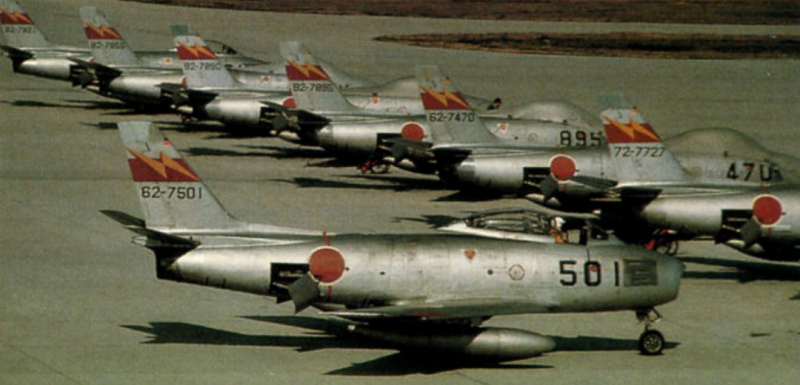
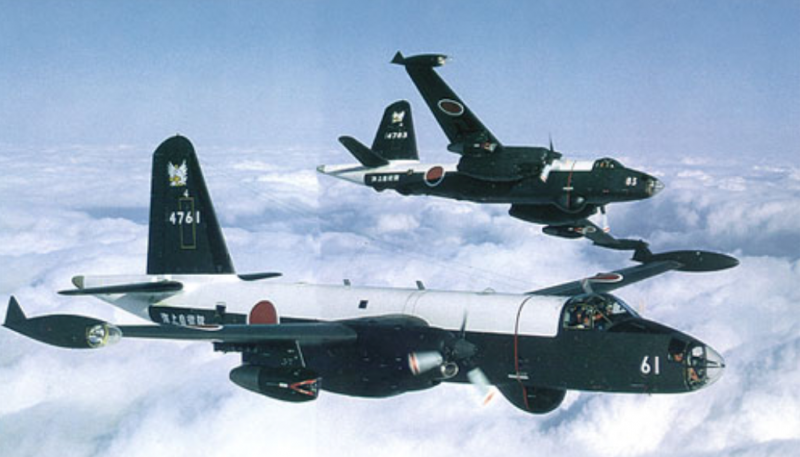
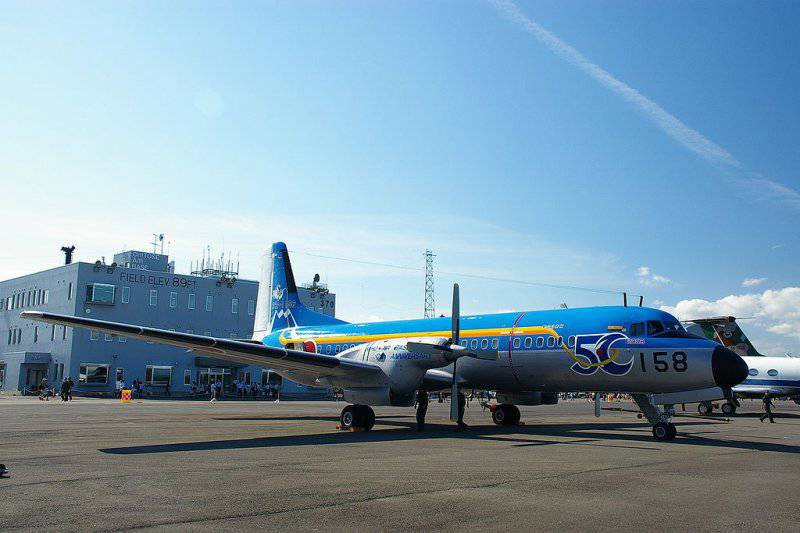
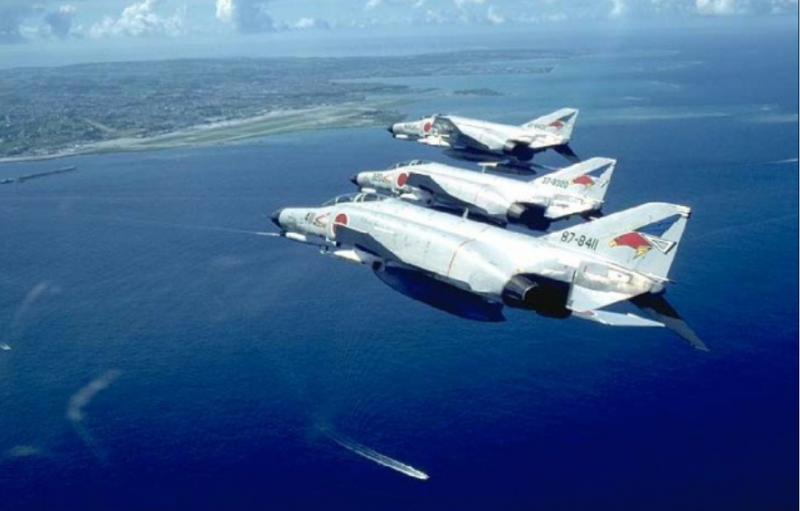
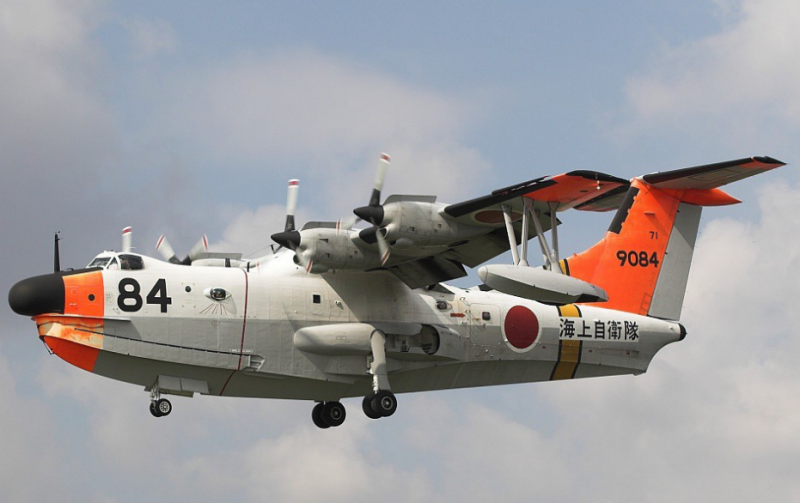
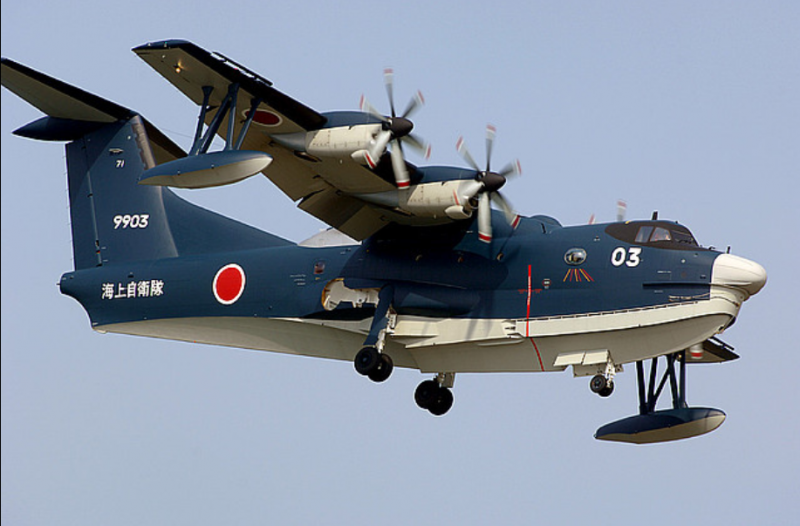
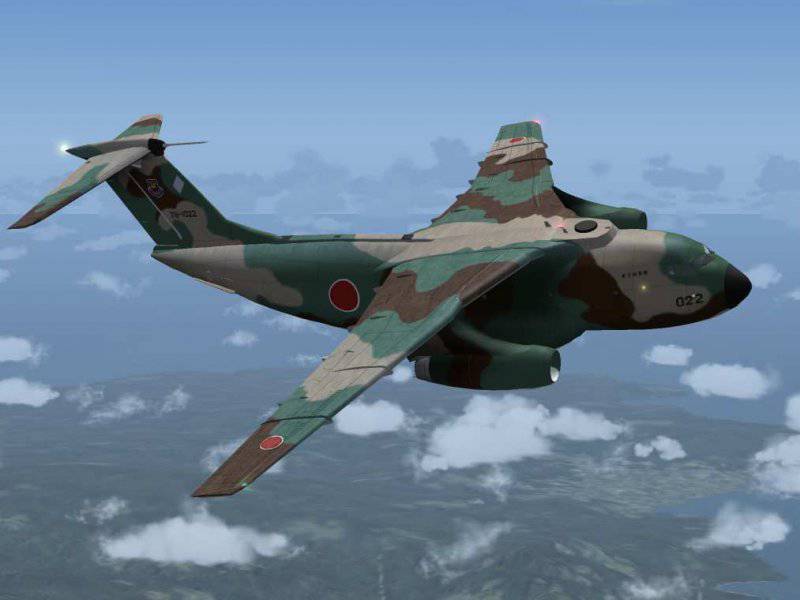
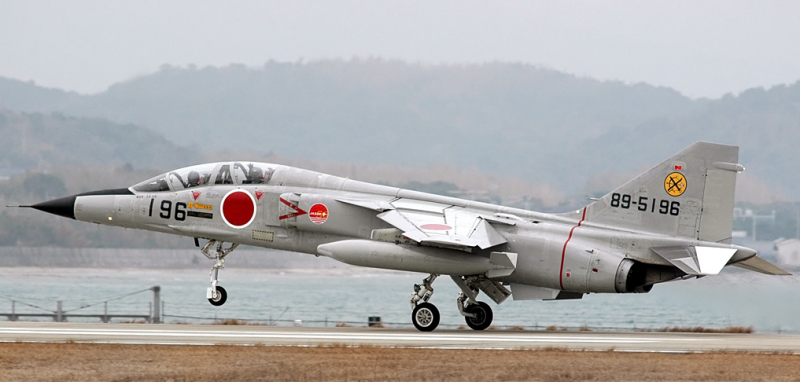
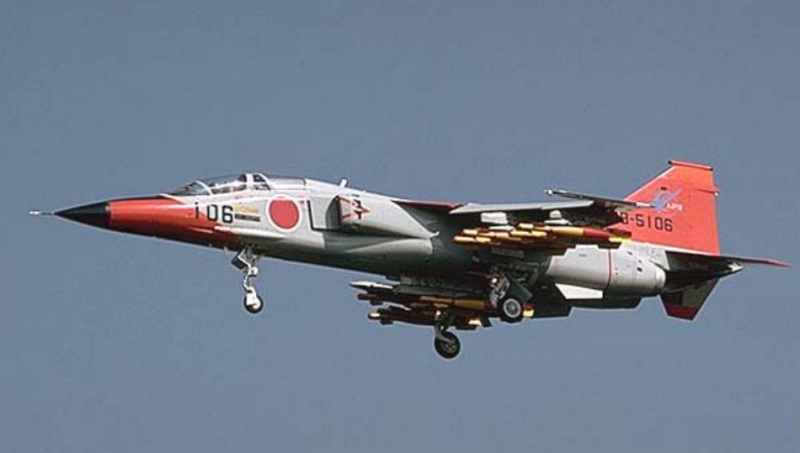
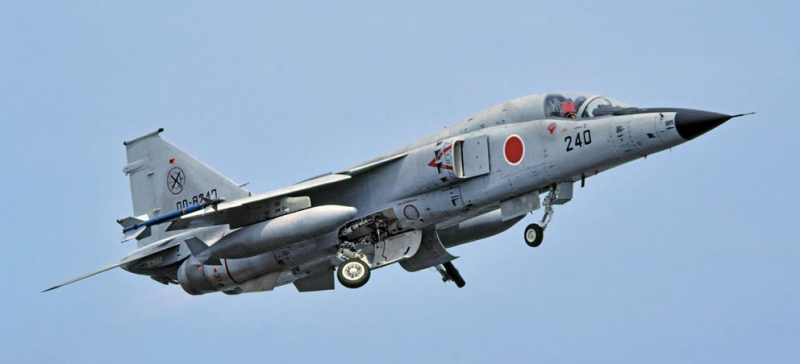
Information